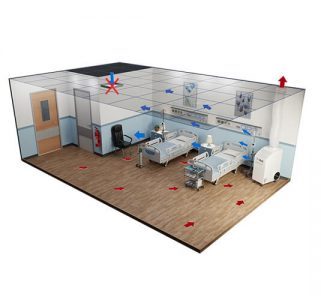

What are applications suitable for room pressurization with dust collectors?Ĭement and lime manufacturing, metal and coal mining, pharmaceutical processing, grain processing, and power generation are the most common industries with dust collector pressurization needs. The air blasted out of the contaminated space passes through three filters, culminating in a HEPA (high-efficiency particular air) filter that filters to the same level as a N95 mask. The air is blasted out of the treatment room, creating a negatively pressurized situation where, for example, when a door from the lobby is opened, the air rushes in instead of out. Negative pressure rooms are also commonly used in hospitals and medical settings to prevent the spread of contagious illnesses from one area to another. Negative pressure, on the other hand, may be employed in a pharmaceutical facility when strong substances are used to prevent dust from contaminating other portions of the plant - often in conjunction with containment systems. Positive pressure can keep hazardous outside air out of an office, server room, or other enclosed areas.


When you go into a positively pressured environment from the outside, you’ll notice a “whoosh” of air fleeing owing to the greater pressure within the space. Positive pressure (also known as “inflating the building”) keeps particle and gaseous pollutants out of a space by forming an air barrier between the interior and outside. The application of positive or negative air pressure in a room to prevent dust entry is known as pressurization. While high-efficiency HVAC filters are often regarded as the most popular solution, cartridge-type industrial dust collectors used in conjunction with an existing HVAC system can be a more effective alternative. An effective approach to this problem is room pressurization combined with adequate air filtration. However, dust infiltration from neighboring manufacturing operations or particulate contaminants in outdoor air must be safeguarded in these facilities’ offices, conference rooms, control rooms, server rooms, and other similar places. High-efficiency dust collectors are well recognized for keeping industrial manufacturing environments clean.


 0 kommentar(er)
0 kommentar(er)
